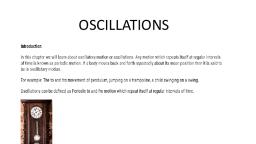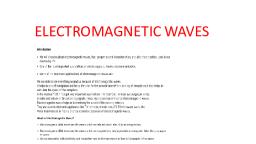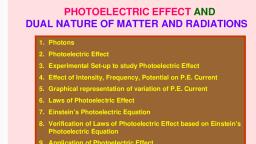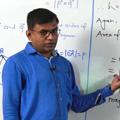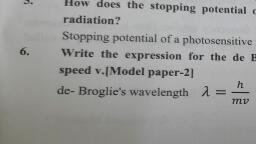Page 1 :
EIN OT Nuc Sor Mu Wea aie a UEC CE, , TN acca ela eo Cue CUA CULL ut cs eed, , Meu RUISCro Te Sera ec, SOT TRON i requirements of these Entrance Tests., , , , , , Duat Nature oF Ra IATION AND MATTER, , Planck's Theory, , In 1900, Planck tackled the problem of finding, a theory which would fit the facts of black body, radiation. Whereas others had considered the, radiation to be emitted continuously, Planck, supposed this to occur intermittently in the form of, small packets of energy called ‘quantum’ of energy,, the size of which depend on the frequency of the, oscillator producing the radiation., , e A body would thus emit or absorb energy in terms, of integral multiples of quantum., , e According to Planck, the quantum of energy E for, radiation of frequency v is given by E = hv, where, his a constant, called Planck’s constant., , Photoelectric Effect, , It is the phenomenon of emission of electrons by metals, when illuminated by light of suitable frequency. The, emitted electrons are called photoelectrons., , Work Function, , @, , The minimum energy needed by an electron to, come out from a metal surface is called work, function of the metal. It is denoted by 9 or Wy and, measured in electron volt (eV)., , It depends on the nature of the metal., , PHYSICS FOR YOU | JANUARY ‘22, , Stopping Potential, , © ‘The minimum negative potential given to anode, plate w.r.t. to cathode plate at which the photoelectric, current becomes zero is called stopping potential or, cut off potential. It is denoted by Vo. The stopping, potential is directly related to the maximum kinetic, energy of electrons emitted., , ath oe, where m is the mass of photoelectron and Vinax is, the maximum velocity of emitted photoelectrons., The stopping potential (Vo) depends on :, , — the frequency of incident light, — the nature of the emitter material., , Einstein’s Photoelectric Equation, , If a light of frequency v (> v9) is incident on a, photosensitive material having work function (p),, then maximum kinetic energy of the emitted, electron is given as Kynax = hV - Oo., , This equation is called Einstein's photoelectric, equation. For v > Uo (threshold frequency), , eVo =hv - dor V, -(#}o-%, e e, , In terms of wavelength the Einstein’s photoelectric, , equation can be written as eV, =hc (: - a, , where Ag = threshold wavelength ro, 4 = incident wavelength
Page 2 :
3 Experimental study of Photog, , — — *Stric eff, t, Observation T, , variation of photoelectric current |, with intensity of incident light, , keeping accelerating potential, and frequency constant, , current, , Graph, , Intensity of light =>, , Variation = of” photoelectric, current with collector plate, potential for different intensities |, and same frequency of incident, , light., , , , Inferences ;, For a given metal and frequency, , of incident radiation, the |, number of photoelectrons |, emitted per second is directly |, Proportional to the intensity of |, the incident light. |, , ——_——+{, , For a given frequency of |, incident light, the stopping, potential is independent of the, intensity., , , , , , , , , , , , , , , , — Retarding - Collector plate, potential potential, Variation of photoelectric current | t © The value of saturation current, with collector plate potential for | i is independent of incident, different frequencies and same i frequency., intensity of incident light. i © The stopping potential is more, v4>0,>0, negative for higher frequencies, vs ee of incident radiation., © The energy of the emitted, 03 Yon You es electrons depends on the, SS eae frequency of incident light., Variation of stopping potential Vo | |* For a given Pho , wel, ‘i | | material, stopping potential |, with frequency v of incident | " ioe wie |, radiation fora given photosensitive | | (a) increases id |, material. | |, , a, , , , Frequeney of incident —>, , radiation (v), , frequency of incident radiation —
Page 3 :
Particle Nature of Light : The Photon, Einstein proposed that electromagnetic radiation is, quantized and exists in elementary amounts we now, call photons., , The characteristic properties of photons are as follows :, © Inthe interaction of radiation with matter, radiation, behaves as if it is made of particles like photons., , ® Each photon has energy F (= Av = he/A) and, , ho |, , © AS, , © The photon energy is independent of the intensity, of radiations., , © All the photons emitted from a source of radiations, travel through space with the same speed c,, , © The frequency of photon gives the radiation, a, definite energy (or colour) which does not change, when photon travels through different media., , © The velocity of photon in different media is different, which is due to change in its wavelength., , The rest mass of a photon is zero. According to, theory of relativity,, , = mv 1—v?/c? wi), , where rp is the rest mass of particle. As a photon, , moves with the speed of light, v = c, so from (i),, , my = 0., , Photons are not deflected by electric and magnetic, , fields. This shows that photons are electrically, , neutral., , © In a photon-particle collision (such as photoelectron collision), the energy and momentum are, conserved. However the number of photons may, not be conserved in a collision., , momentum of =, , Wave nature of matter, , Radiation has dual nature, wave and particle nature., The nature of experiment determines whether a wave, or a particle description is best suited for understanding, the experimental result. Reasoning that radiation and, matter should be symmetrical in nature, Louis Victor, de-Broglie attributed a wave-like character to matter,, ‘The waves associated with the moving material particles, are called matter waves or de-Broglie waves,, , de-Broglie wavelength, h, Neos, , h, P V2Km, , @®© @ puysics ror you | sanuany 22, , BS lat, , where p is the momentum of the particle and K is the, , kinetic energy of the Particle and m is mass of the, particle,, , ® de-Broglie wavelength is independent of the charge, , and nature of the material particle., , © Ifa particle of charge q is accelerated through a, potential difference V, its de-Broglie wavelength is, h, Biven by, 1 = —, y2mqV, ., , For a gas molecule of mass m at temperature, T kelvin, the de Broglie wavelength is given by, , = h, N3mkT, , Davisson and Germer Experiment, , © In 1927, Davisson and Germer designed an, experiment to verify the wave nature of electron as, shown., , © A beam of electron emitted by electron gun is made, to fall on nickel crystal cut along cubical axis at a, particular angle., , , where k is the Boltzmann constant., , , , _ HTB | Incident, bhai a Nicepiah, , , , , , , , , , , Filament, , Vaccum Diffracted, chamber electron beam, {To galvanometer, Movable collector, , , , , , , , © The diffracted beam of electrons is received by the, movable detector for different angles about the, point of incidence., , © The measured intensity of scattered electron beam, , was maximum at an angle = 50°(or @ = 65°) for an, accelerating voltage of 54 V.
Page 4 :
rows, mson’s Model of Atom, Tl = first model of atom —, e i ‘Thomson in 1898, According to con by, ositive charge of the atom is uniformly decre the, throughout the volume of the kes oe, negatively charged electrons are embedded in j te, ceeds in a watermelon. This model was picture, t like, called plum pudding model of the atom, Squely, , R utherford’s Model of Atom, , ‘according to this model, the entire POsitive cha, and most of the mass be concentrated in a stall, region called the nucleus. The electrons revolvin;, around the nucleus in orbits just as the ihe, revolving around the sun., , Rutherford’s a-Scattering Formulae, Number of a-particle scattered per unit area, N(6), at scattering angle 8 varies inversely as sin*(6/2),, , ie, N(@)<, , 1, sin*(0/2), e Impact Parameter, — It is defined as the perpendicular distance of, the initial velocity vector of the alpha particle, from the central line of the nucleus, when the, particle is far away from the nucleus of the, atom., — The scattering angle © of the particle and, impact parameter b are related as, pa Ze cot(8/2), 4ne,K, where K is the kinetic energy of the o particle, and Z is the atomic number of the nucleus., ~ Smaller the impact parameter, larger the angle, of scattering 0., ® Distance of closest approach, ~ At the distance of closest approach whole of, the kinetic energy of the alpha particles is, converted into a potential energy., Distance of closest approach is given by, , , , 2Ze?, ae Ane, K, ‘0:, Bohr's Model of Atom, , B, , pe developed a theory of hydrogen and hydrogen, Po: atoms which have only one orbital electron. His, stulates are as follows :, , ‘An electron can revolve around the nucleus only, owed circular orbits of definite energy, , in certain all E, te. These orbits, , and in these orbits it does not radiat, are called stationary orbits., Angular momentum of the electron in a si, , orbit is an integral multiple of h/21., , nh, , nh, ; =— or, mvr=——, ie, L » an, , where m is the mass of the electron, v is the velocity, of the electron, ris the radius of the orbit and n is a, positive integer called principal quantum number., ‘This is called as Bohr’s quantisation condition. :, , This postulate is equivalent to saying that in a, stationary state, the circumference of a circular orbit, , contains integral numbers of de-Broglie wavelength., , nh nh, 2nr=nX=— ie. L=mvr=—., mr = nh a ie oF, , ‘The emission of radiation takes place when an electron, makes a transition from a higher to a lower orbit. The, B=, frequency of the radiation is given by v= 2 h A, where E, and E; are the energies of the electron in, , the higher and lower orbits respectively., Since the centripetal force for circular orbit is provided, , 1 Ze? _ mv, Ane, r? Fr, where Z is the atomic number of the element and e, is the electronic charge., , tationary, , , , , , by the Coulomb’s force, we have, , Bohr’s Formulae, @ Radius of n" orbit, , Ane? | eqn?, 4n’mZe” nmZe*, For hydrogen atom, Z = 1, = enh?, , , , th, , , , al 2, =agn, , is called



















